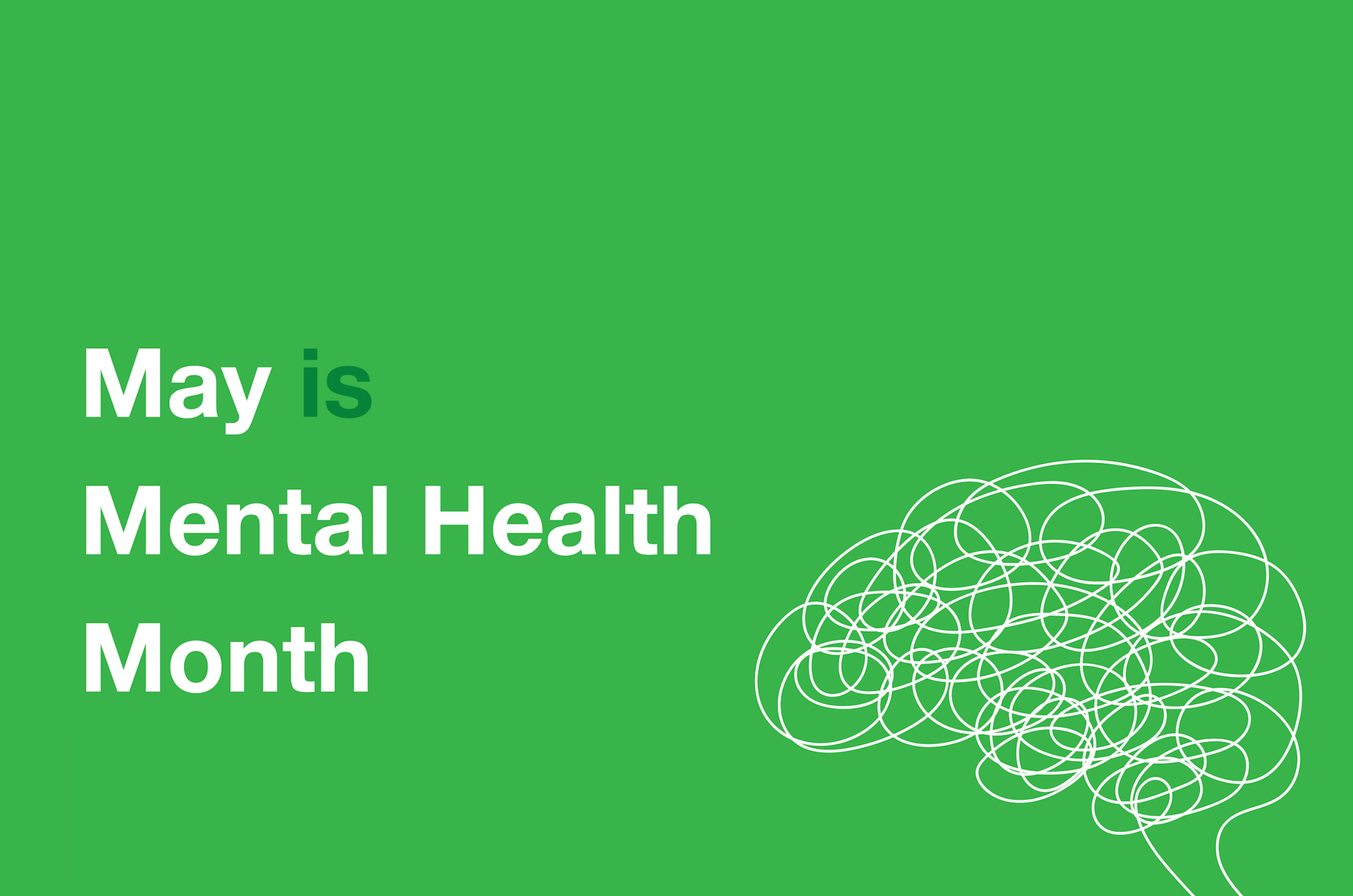By Samantha Congdon, LMFT
We know mental health continues to hold a stigma in our society, so the month of May is dedicated to raising awareness about mental health conditions. Nearly 450 million people worldwide are currently living with mental illness, yet nearly two-thirds of people with a known mental illness never seek treatment, states the Anxiety and Depression Association of America (ADAA). So, let’s talk mental health.
Many of us hear the term mental illness and mental health used interchangeably, but the Center of Disease Control and Prevention (CDC) helps define the differences. Mental illness is a condition that affects a person’s thinking, feeling, mood, or behavior, such as depression, anxiety, bipolar disorder, or schizophrenia. These conditions may occur occasionally or chronically, negatively affecting someone’s ability to relate to others and daily functioning. Whereas mental health includes a person’s emotional, psychological, and social well-being. Exploring mental health is about diving into how a person thinks, feels, and behaves. When you take care of your mental health, you are helping achieve the universal goal of enjoying life. To achieve this goal, it involves finding the balance between life activities, responsibilities, and establishing psychological resilience.
A person’s mental health can change over time, depending on various factors. It may be time to seek a mental health professional if your cognitive, behavioral, or emotional state is adversely affecting your daily life functioning, relationships, and/or physical health. The American Psychiatric Association (APA) states, mental health does not discriminate, it can affect anyone regardless of their age, gender, income, ethnicity, race, spirituality, or sexual orientation. Here is a list of a few conditions that can affect a person’s mental health: biological factors/genes, stress, a traumatic event, abuse, and anything that negatively disrupts your routine and effects your daily life functioning.
According to the National Alliance of Mental Illness (NAMI), it is so important to bring awareness about mental health, because one in five US adults will suffer from a mental health condition during one’s lifetime. As instances of mental illness increase, so does awareness. So, let’s talk, learn, and educate ourselves on how to better support mental health for ourselves and our loved ones. Always remember you are not alone; help is just a phone call away.
References: https://adaa.org/mental-health-awareness-month
Legg, T. J. & Newman, T. (2020). What Is Mental Health. https://www.medicalnewstoday.com/articles/154543
Telloian, C. (2019). Mental Health Awareness Month 2019. https://www.goodtherapy.org/blog/mental-health-awareness-month-2019-what-can-you-do-0430198
Regis College. The State of Mental Health in the U.S. – Improving Awareness. https://online.regiscollege.edu/blog/state-mental-health-u-s-improving-awareness/ What Is Mental Illness? American Psychiatric Association. https://www.psychiatry.org/patients-families/what-is-mental-illness
Mental Health. Centers For Disease Control and Prevention. https://www.cdc.gov/mentalhealth/learn/index.htm






